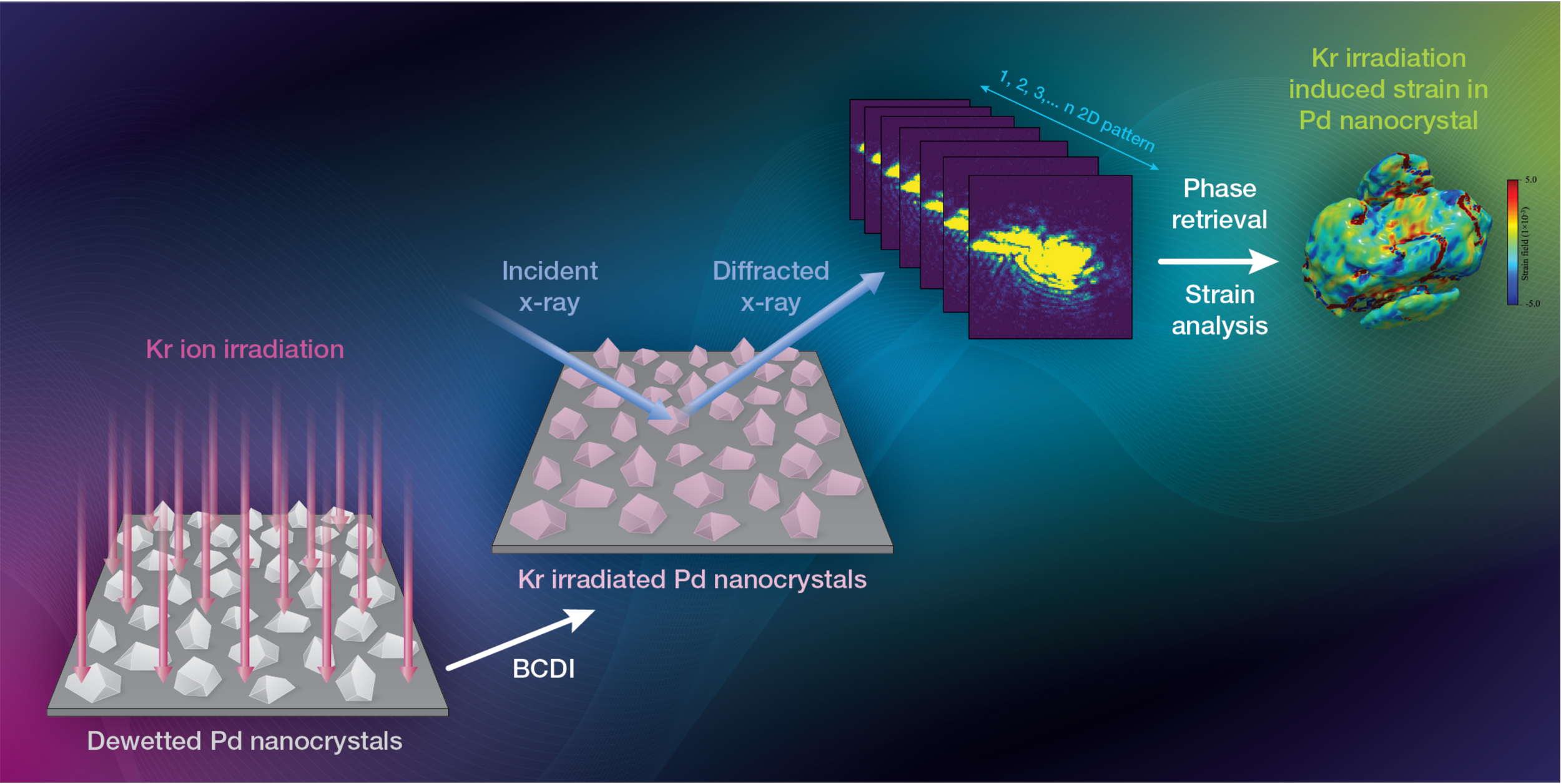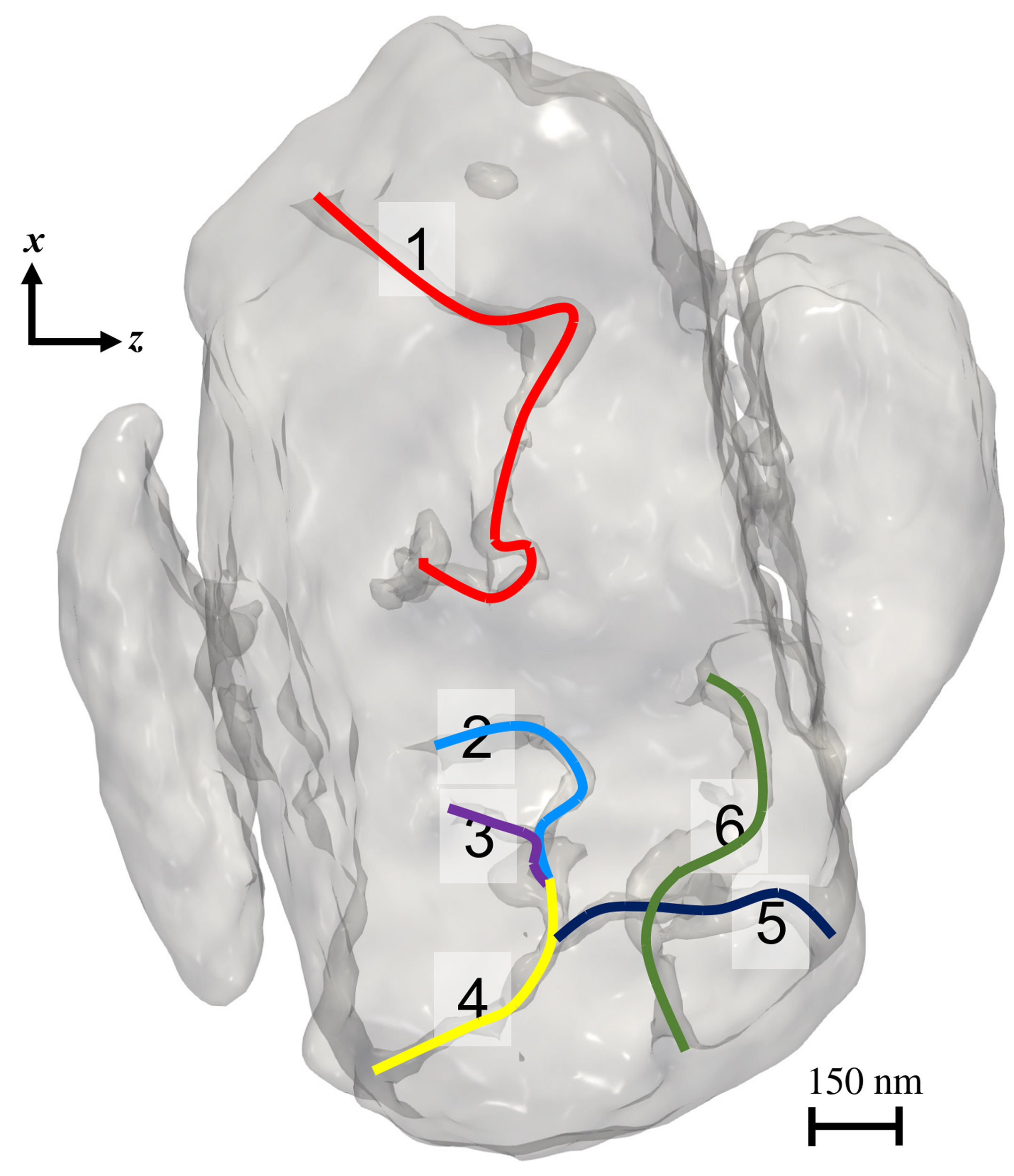3/4D Defects Visualization
High-resolution three/four-dimensional imaging of micro/nanostructural features makes it possible to establish high-fidelity qualitative and quantitative structure-property relationships in materials. Our group combines electron microscopy with scanning probe X-ray based techniques such as Bragg Coherent Diffraction Imaging and Bragg Ptychography to visualize structural properties and lattice defects in materials with nanoscale resolution. Coupling these techniques with state-of-the-art machine learning algorithms is a powerful tool for detecting and classifying defects in irradiated materials.

A schematic of the experimental Bragg Coherent Diffraction Imaging setup.

3D visualization of dislocation network in Irradiated palladium nanocrystal.
High throughput machine learning driven materials synthesis
Traditional materials design relies mainly on manually characterizing physical and chemical properties to select candidate materials. As such, new materials design is time consuming and relies heavily on intuition, trial, and error. To ramp up the materials design process, we are coupling materials synthesis with high throughput characterization and materials informatics to make these decisions autonomously. Therefore, with these new tools, we can rationally narrow down a finite multi-element phase space to explore in detail. This approach will facilitate rapid alloy design with tailored properties for specific applications.

Machine Learning assisted interatomic potential for actinide materials
Actinide compounds such as UO2, U-Zr, U3Si2, etc., are materials used as fuel in nuclear reactors. Understanding them at the atomic scale is critical for optimal nuclear fuel design. However, due to the complexity of describing the interactions of the 5f electrons, first principles-based methods such as density functional theory (DFT) for investigations of actinides are difficult and computationally expensive. To tackle this problem, we will develop machine-learning based interatomic potential with the accuracy of DFT to study the thermophysical, interfacial, and radiation properties of actinide systems.
Self-organization as a tool for controlling materials degradation
Self-organization of nanostructures such as gas bubbles, voids, and precipitates into superstructures is of great scientific and technological importance. Such ordering alters the potential energy surface, which has implications for the migration of defects, ions, and fission gases. This project is focused on understanding the superstructure-properties relationship to inform the design of radiation tolerant and cyclic process driven materials.

Vacancy distribution at the several stages of the simulation in a nanoparticle and a periodic bulk. (50 atomic unit cells (a0) system length, 773 K, 10-3 dpa/s). Atomic Kinetic Monte Carlo simulation performed by Anton Schneider.
